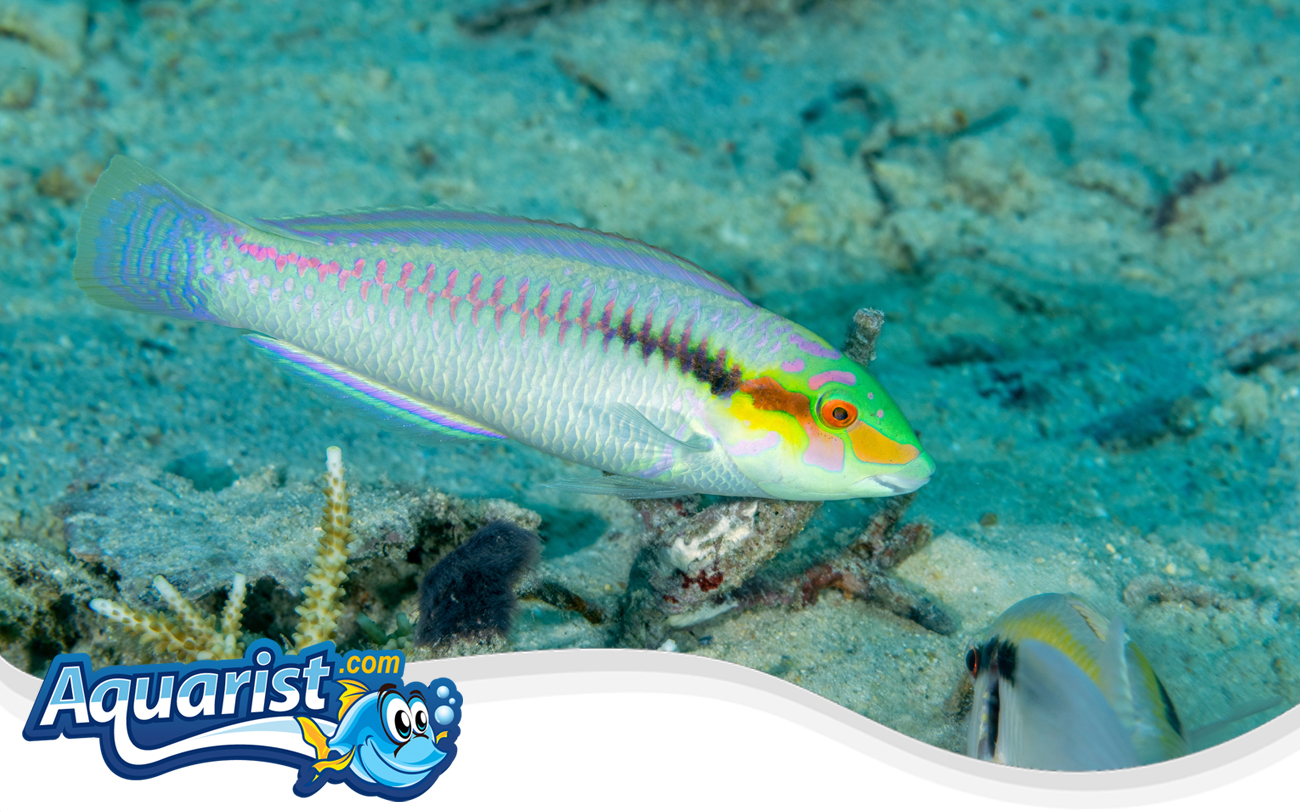Overview
- Native to the Indo-Pacific region, commonly found in coastal reefs, lagoons, and sandy seabeds.
- Recognized for its elongated body with a yellowish-green base color and distinctive dark zigzag patterns.
- A highly active forager, constantly moving and searching for food along the substrate.
- Juveniles tend to have more pronounced markings, while adults develop a deeper coloration.
- Often used in reef aquariums to help control pest populations such as small invertebrates.
Feeding
- Carnivorous diet, primarily consuming small crustaceans, worms, and benthic invertebrates.
- Readily accepts frozen and live foods such as mysis shrimp, brine shrimp, and chopped seafood.
- Can be trained to eat high-quality marine pellets and flake foods.
- Requires multiple small meals throughout the day to sustain its high energy levels.
- Forages by sifting through sand, mimicking its natural feeding behavior.
Habitat
- Commonly found in sandy-bottomed areas near coral reef formations.
- Requires an aquarium with a soft sand substrate for burrowing.
- Best suited for tanks with live rock and ample hiding spots.
- Moderate to strong water flow is beneficial for simulating natural reef conditions.
- A minimum tank size of 75 gallons is recommended due to its active swimming habits.
Fish Care
- Optimal water temperature: 74-80°F (23-27°C).
- Ideal pH range: 8.1-8.4, with a specific gravity of 1.023-1.026.
- Requires stable water parameters and regular maintenance.
- Can be sensitive to sudden fluctuations in water quality.
- Burrows in the sand at night for protection, so maintaining a deep enough sandbed is essential.
Compatibility
- Generally peaceful but may become territorial with other wrasses of similar size.
- Compatible with other peaceful reef fish such as clownfish, tangs, and gobies.
- Should not be housed with overly aggressive tank mates.
- Reef-safe with corals but may consume small ornamental shrimp and snails.
- Does best in a community tank with plenty of open space and hiding areas.
Aquarium Behavior
- Highly active swimmer, constantly exploring its environment.
- Frequently seen picking at live rock and sifting through sand for small invertebrates.
- Burrows in the sand at night for protection, emerging in the morning.
- Curious and interactive, often displaying interest in new tank additions.
- Thrives in a well-structured aquarium that provides both open swimming space and secure hiding spots.


